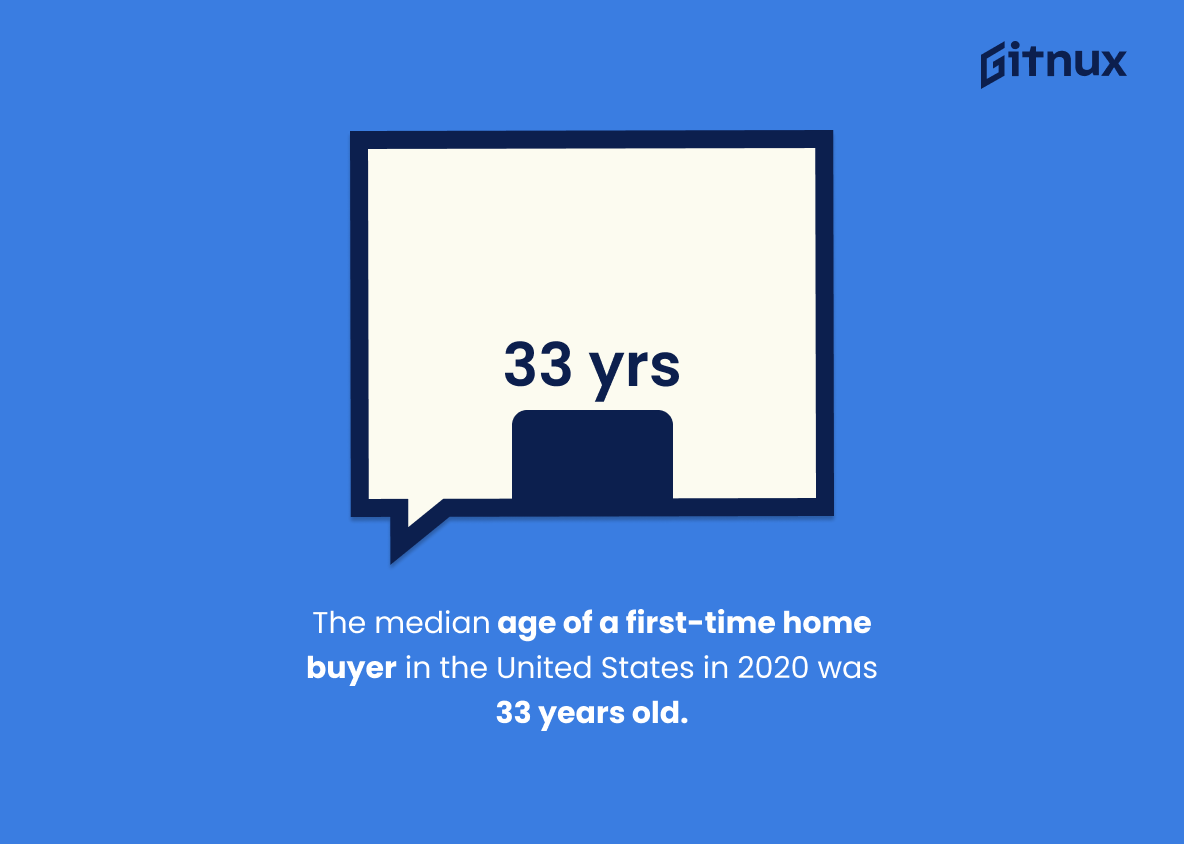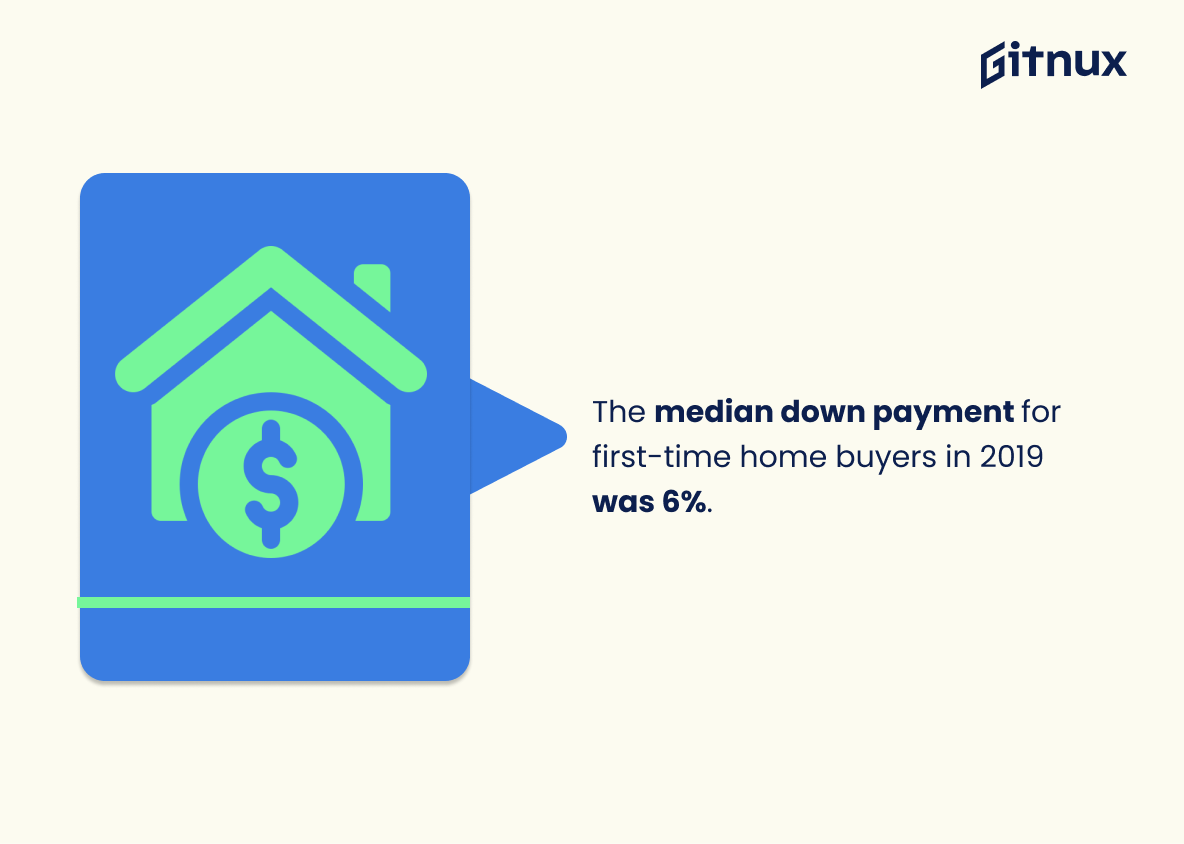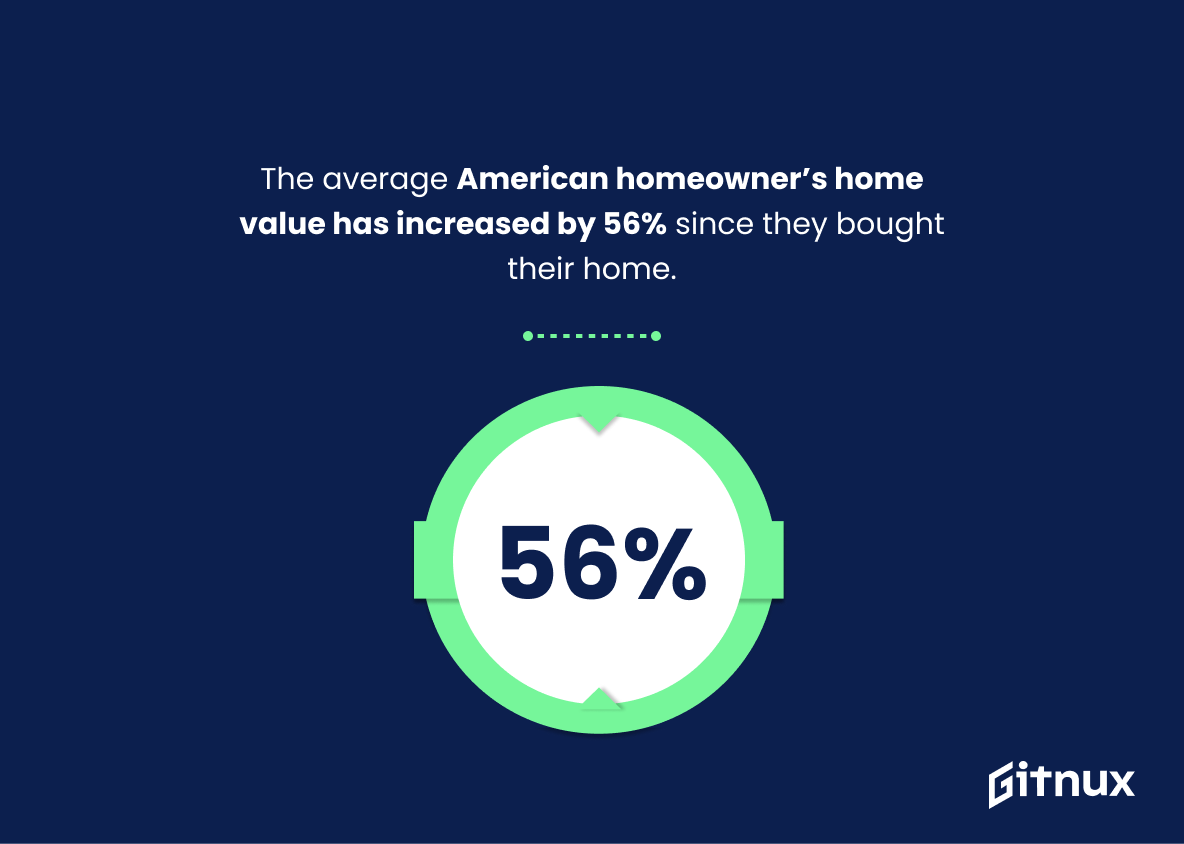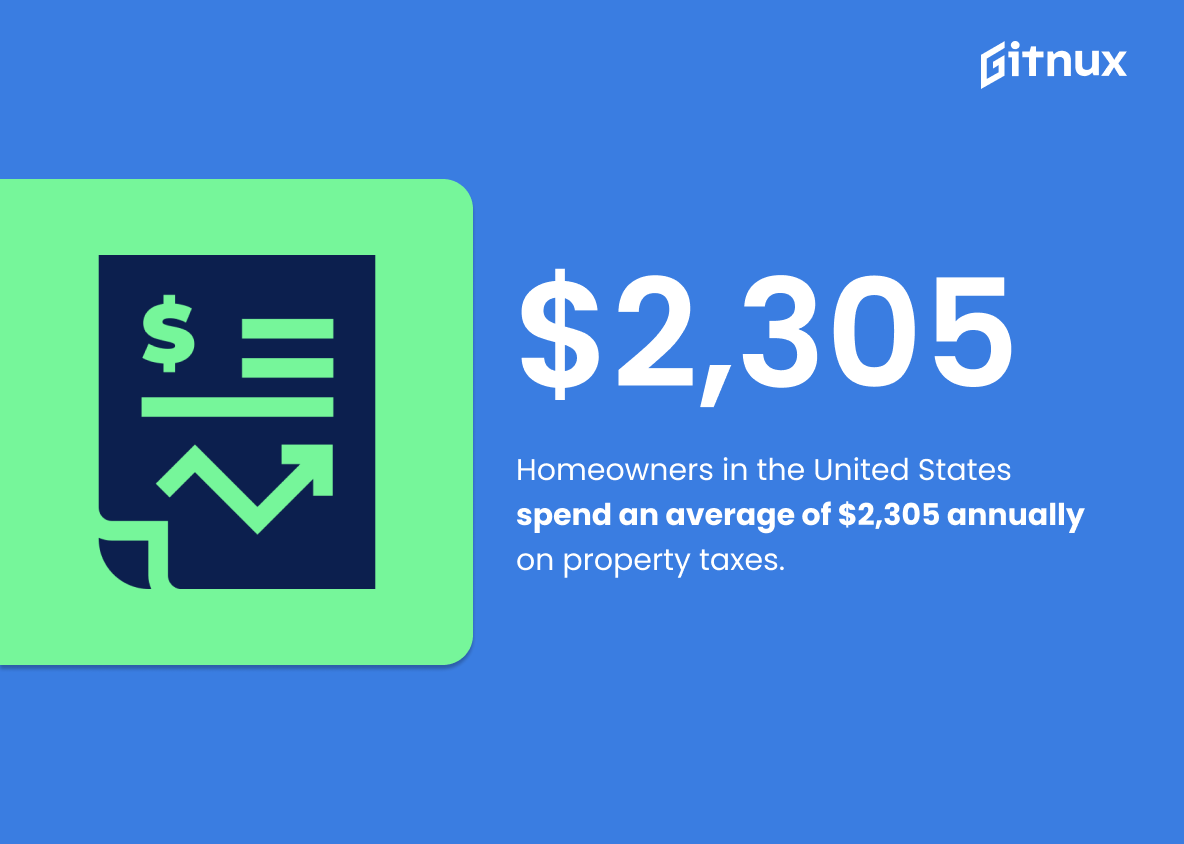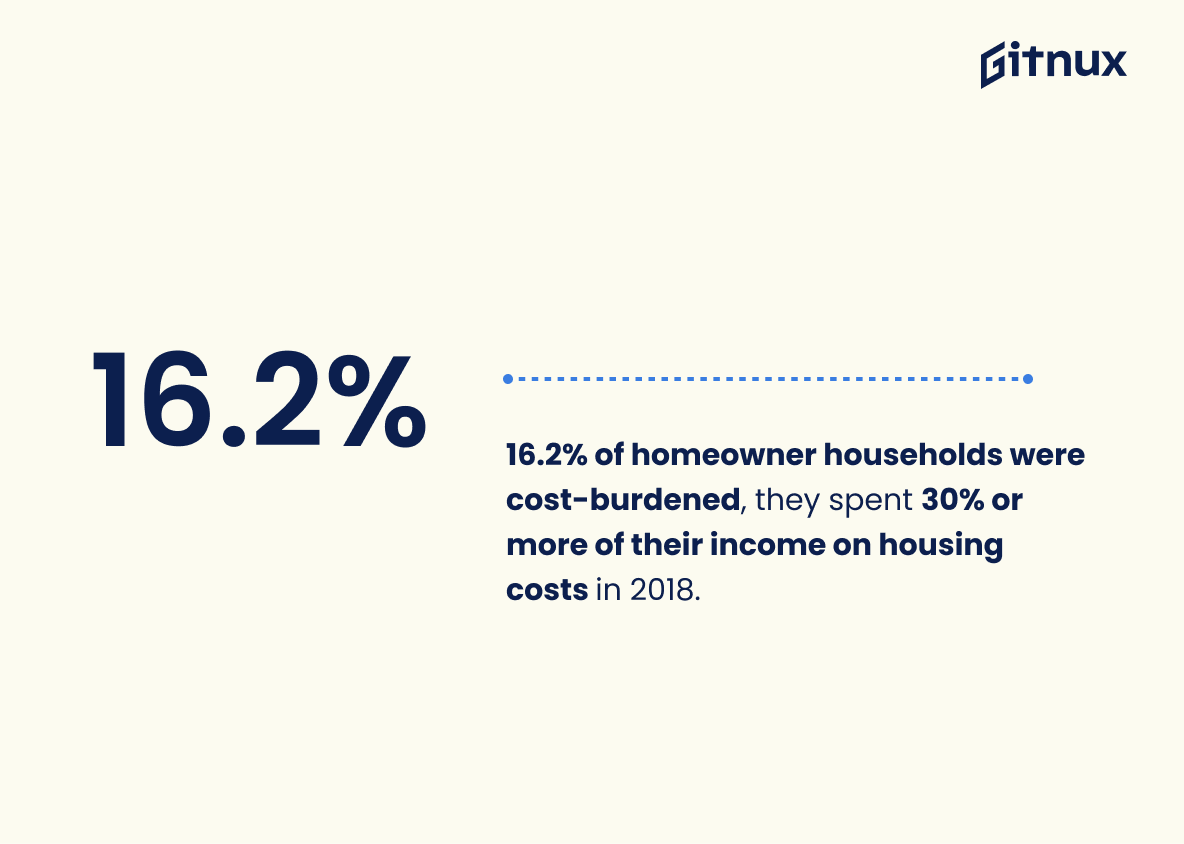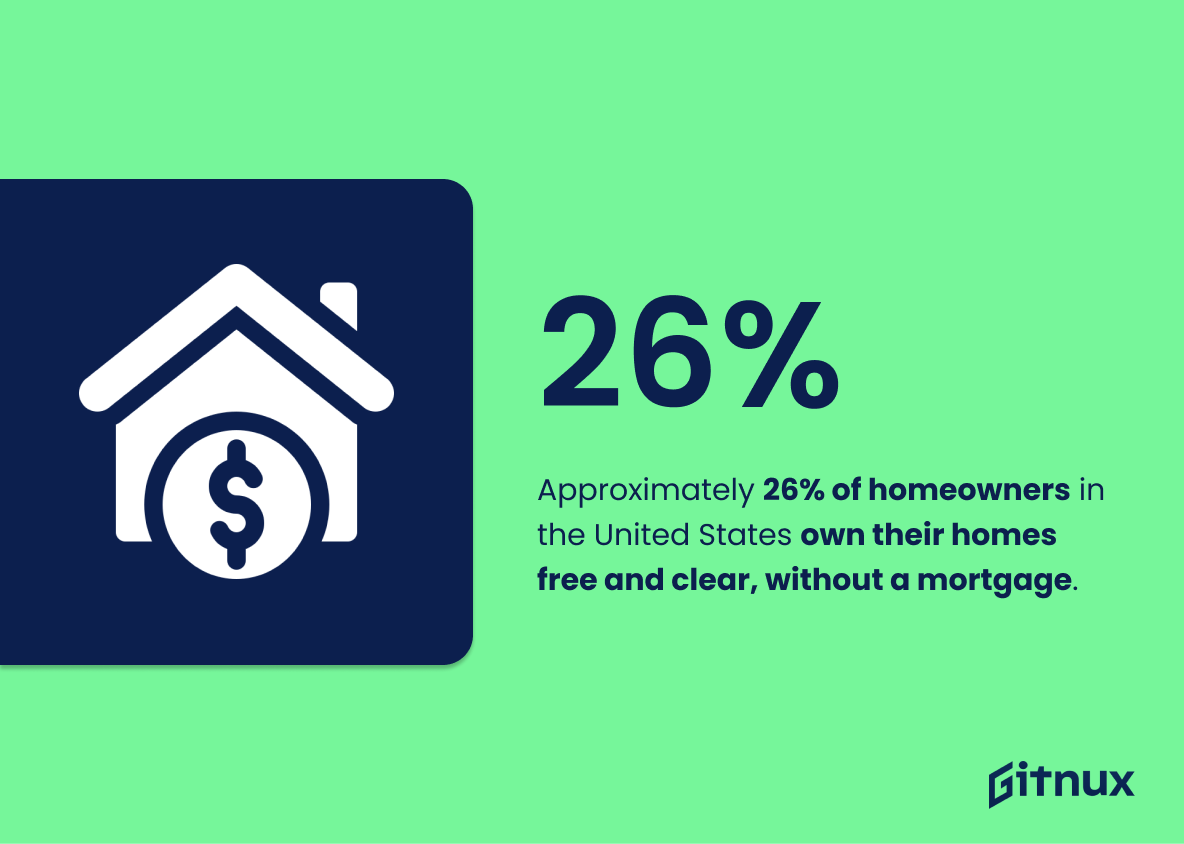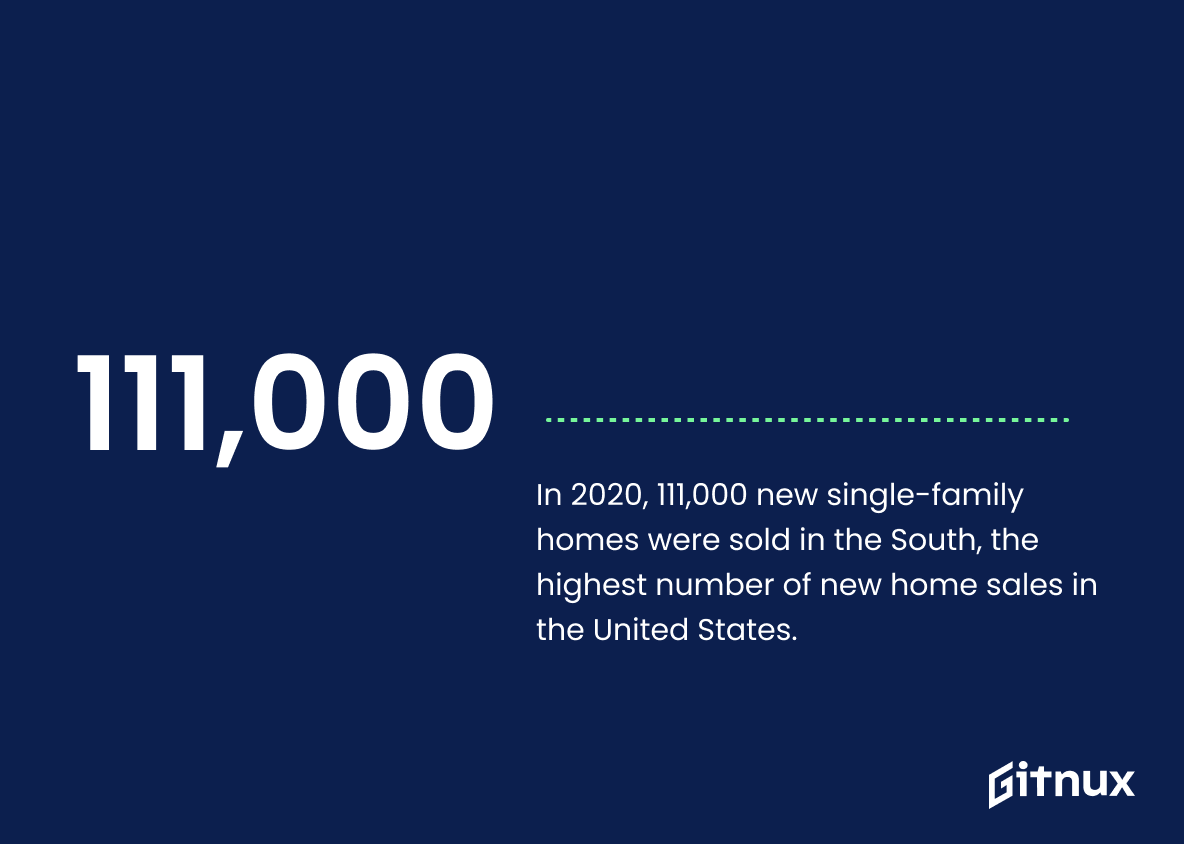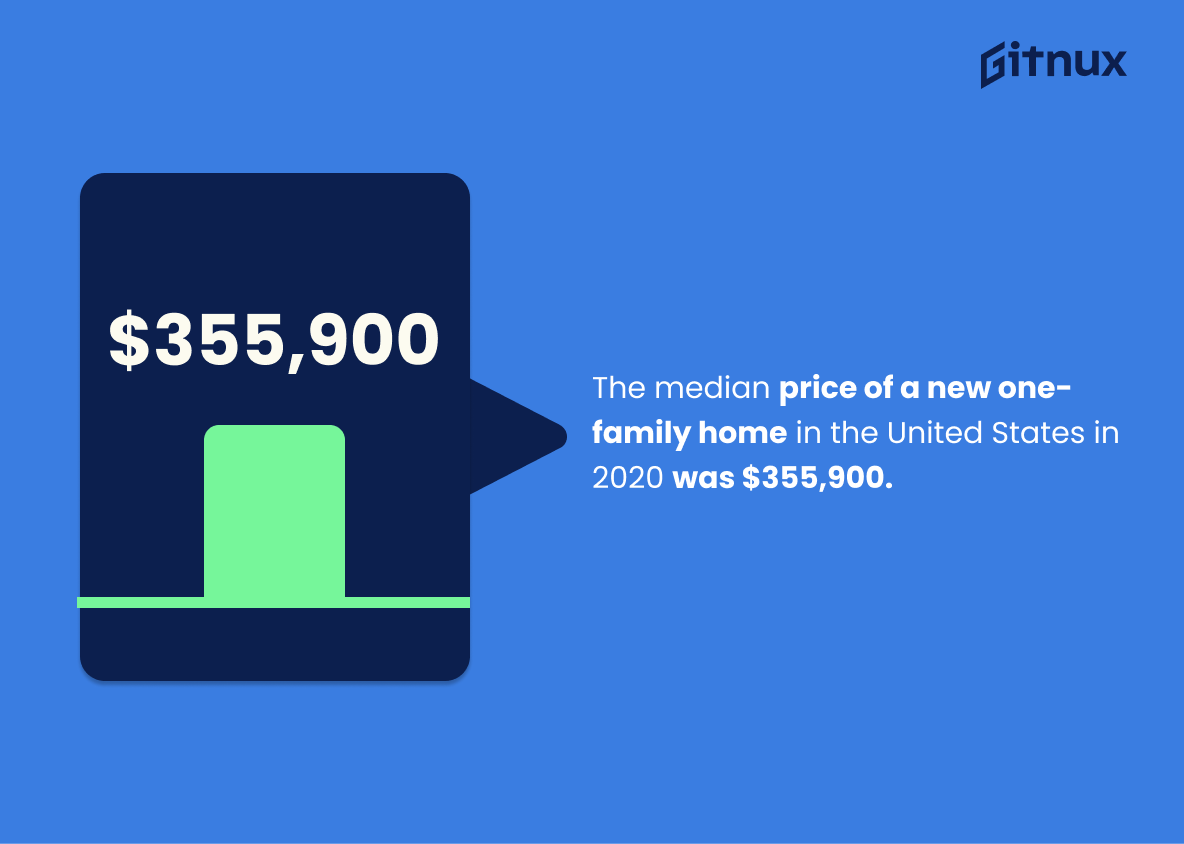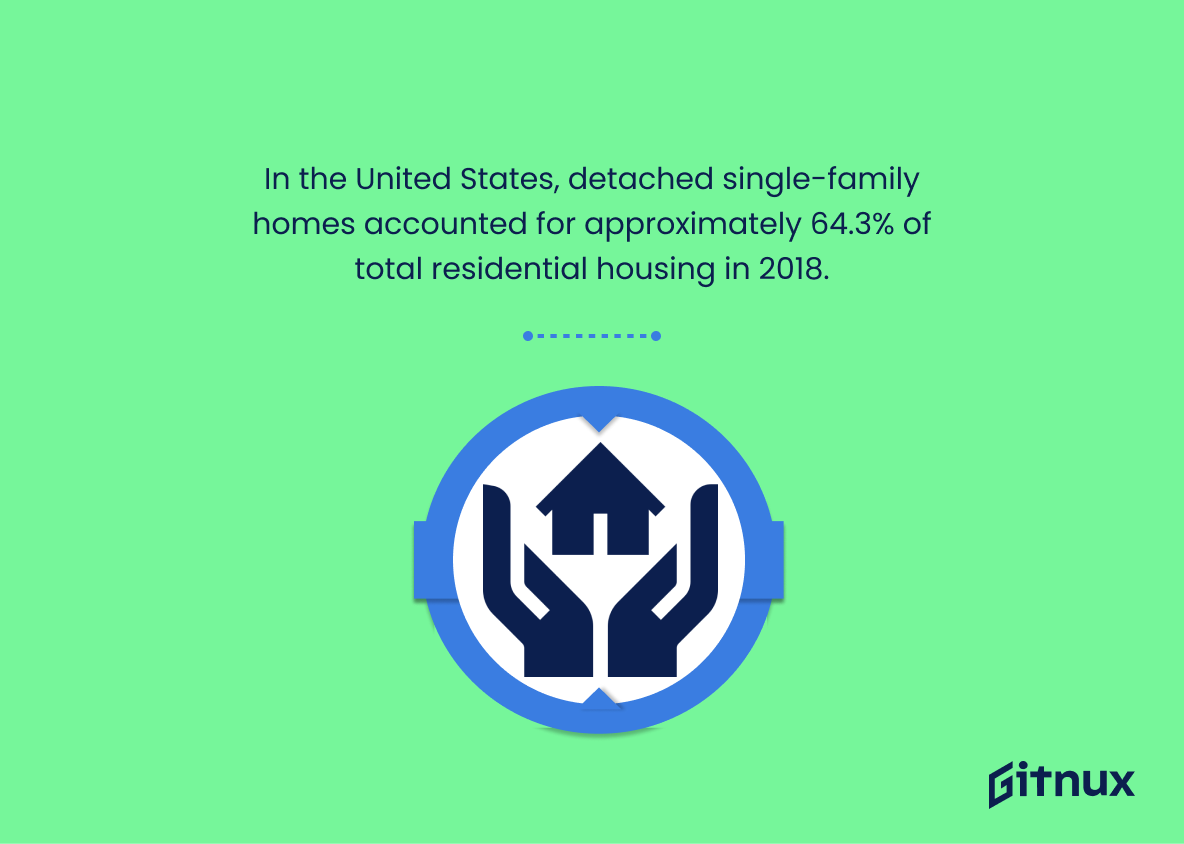Homeownership is an important part of the American Dream, and it’s no surprise that homeownership rates in the United States remain high. According to data from the U.S. Census Bureau, 65.8% of Americans owned their own homes as of Q4 2020 – a figure which has remained relatively steady over recent years despite economic uncertainty caused by COVID-19 and other factors.
The number of homeowner households in America was estimated at 82 million for 2020 according to Statista, with first-time buyers making up 34%. The median age for these new homebuyers was 33 years old; 88% financed their purchase while 95% did so among first-timers alone – typically putting down 6%, on average, as a down payment according to Zillow’s report on Home Buyer & Homeowner Motivations (2020).
On top of this, WalletHub found that US homeowners spend an average $2305 annually on property taxes while Gobankingrates reported that since buying their home the value had increased 56%. Additionally NAR research revealed 73% believed now is a good time to sell whilst also noting 13 year tenure amongst current owners plus 26 percent who are mortgage free.
Furthermore 89 percent have access to high speed internet compared with 72 percent renters per census figures released 2021; 111 thousand single family homes were sold South region last year highest across USA (Statista) costing 355k each (Census); 64 point 3 % detached single family housing units 2018(Census) 55 % all outstanding individual debt mortgages US New York Fed Microeconomics/HHDC finally 3 point three percentage behind payments end 2020 per Census Library Stories March 2021 article ‘Homeowners Risk Foreclosure’ . Finally 30 % households headed one person 15 only owner occupied Statista Median Size Household Type 241524
The fact that Homeownership rates in the United States were approximately 65.8% in the fourth quarter of 2020 is a telling statistic that speaks volumes about the state of the housing market. It is a clear indication that homeownership is still a viable option for many Americans, despite the economic uncertainty of the past year. This statistic is an important piece of information to consider when discussing the current state of the housing market and the potential for homeownership in the future.
The number of homeowner households in the United States in 2020 was estimated to be around 82.55 million.
This statistic is a telling indication of the importance of homeownership in the United States. It speaks to the fact that a large portion of the population is invested in their homes and the stability that comes with it. It also speaks to the strength of the housing market and the economy as a whole. This statistic is a valuable insight into the state of homeownership in the United States and is an important factor to consider when discussing homeowner statistics.
Homeowner Statistics Overview
First-time buyers made up 34% of all home buyers in 2020.
This statistic is a telling indication of the current state of the housing market. It shows that despite the economic uncertainty of 2020, first-time buyers were still able to make up a significant portion of the home buying population. This could be a sign of a strong housing market, or it could be a sign of a growing trend of younger buyers entering the market. Either way, this statistic is an important piece of information for anyone looking to gain insight into the current state of the housing market.
The median age of a first-time home buyer in the United States in 2020 was 33 years old.
This statistic is a telling indication of the current state of the housing market in the United States. It suggests that the average age of first-time home buyers is relatively young, indicating that the market is still accessible to those who are just starting out in their adult lives. This statistic is important to consider when discussing homeowner statistics, as it provides insight into the current trends in the housing market.
In 2020, 88% of home buyers financed their home purchase, with first-time buyers financing 95%.
This statistic is a powerful indicator of the current state of the housing market. It shows that the majority of home buyers are taking advantage of financing options, with first-time buyers being even more likely to do so. This suggests that the market is strong and that people are confident in their ability to purchase a home. It also indicates that there are plenty of financing options available to those looking to buy a home. This statistic is an important piece of information for anyone looking to buy a home, as it provides insight into the current market and the options available.
The median down payment for first-time home buyers in 2019 was 6%.
This statistic is a telling indication of the current state of the housing market. It reveals that the majority of first-time home buyers are making relatively small down payments, which could be indicative of a lack of financial resources or a reluctance to take on a large amount of debt. This statistic is an important piece of the puzzle when it comes to understanding the current state of the housing market and the challenges that first-time home buyers face.
The average American homeowner’s home value has increased by 56% since they bought their home.
This statistic is a testament to the strength of the American housing market, showing that homeowners are reaping the rewards of their investments. It is a sign of financial security and stability, and a reminder that homeownership can be a great way to build wealth. It is also a reminder that the housing market can be a great source of economic growth, as the increased value of homes can lead to increased consumer spending. This statistic is a great example of the power of homeownership and the potential it has to create a more prosperous future.
Homeowners in the United States spend an average of $2,305 annually on property taxes.
This statistic is a telling indication of the financial burden that homeowners in the United States face when it comes to property taxes. It serves as a reminder of the significant amount of money that homeowners must set aside each year to cover these taxes, and the impact it can have on their overall budget.
Homeownership rates among African Americans were 44.1% in the fourth quarter of 2020.
The fact that Homeownership rates among African Americans were 44.1% in the fourth quarter of 2020 is a telling statistic that speaks volumes about the state of homeownership in the United States. It highlights the disparities between African Americans and other racial groups when it comes to homeownership, and serves as a reminder of the work that still needs to be done to ensure that everyone has access to the same opportunities.
Approximately 16.2% of homeowner households were cost-burdened, meaning they spent 30% or more of their income on housing costs in 2018.
This statistic is a telling indication of the financial strain that many homeowners are facing. It highlights the fact that a significant portion of homeowners are spending a large portion of their income on housing costs, leaving them with less money to cover other expenses. This statistic is an important reminder of the need for more affordable housing options and financial assistance for homeowners.
In 2020, around 73% of homeowners believed that now is a good time to sell their homes.
This statistic is significant in the context of homeowner statistics because it provides insight into the current sentiment of homeowners. It indicates that the majority of homeowners are feeling confident in the current market and believe that now is a good time to sell their homes. This is an important indicator of the health of the housing market and can be used to inform decisions about buying and selling homes.
The median tenure for homeowners in the United States in 2020 was 13 years.
This statistic is a telling indication of the stability of homeownership in the United States. It shows that, despite the economic and social upheaval of 2020, the median tenure of homeowners remained steady, suggesting that homeownership is still a viable and reliable investment.
Approximately 26% of homeowners in the United States own their homes free and clear, without a mortgage.
This statistic is a telling indication of the financial stability of homeowners in the United States. It speaks to the fact that a significant portion of homeowners have the financial means to purchase their homes outright, without the need for a mortgage. This is an important statistic to consider when discussing the overall financial health of homeowners in the United States.
In 2020, approximately 89% of homeowners had high-speed internet, compared to 72.9% of renters.
This statistic is indicative of a significant disparity between homeowners and renters in terms of access to high-speed internet. It highlights the fact that homeowners are more likely to have access to the internet than renters, which can have a significant impact on their ability to access resources, stay connected, and participate in the digital economy. This statistic is important to consider when discussing the advantages and disadvantages of homeownership.
In 2020, there were approximately 111,000 new single-family homes sold in the South region, the highest number of new home sales in the United States.
This statistic is a testament to the strength of the housing market in the South region. It highlights the fact that the region is a desirable place to buy a home, and that the demand for new homes is high. This is an important point to make in a blog post about homeowner statistics, as it shows that the South region is a great place to invest in real estate.
The median price of a new one-family home in the United States in 2020 was $355,900.
This statistic is a telling indication of the current state of the housing market in the United States. It provides insight into the average cost of a new one-family home, which can be used to compare to other housing markets and to track changes in the market over time. This information is invaluable for anyone looking to purchase a new home, as it can help them make an informed decision about their purchase. Additionally, this statistic can be used to inform discussions about the affordability of housing in the United States, and to identify potential areas of improvement.
In the United States, detached single-family homes accounted for approximately 64.3% of total residential housing in 2018.
This statistic is a telling indication of the prevalence of detached single-family homes in the United States. It is an important piece of information to consider when discussing homeowner statistics, as it provides insight into the types of housing that are most popular in the country.
Home mortgages account for nearly 55% of all outstanding individual debt in the United States.
This statistic is a powerful indicator of the financial burden that homeowners in the United States are facing. It highlights the fact that the majority of individual debt is tied up in home mortgages, which can be a significant financial burden for many households. This statistic is an important reminder of the importance of responsible homeownership and the need for individuals to be aware of the financial implications of taking on a mortgage.
In 2020, approximately 3.3% of homeowners in the United States were behind on their mortgage payments.
This statistic is a telling indication of the financial struggles that many homeowners in the United States are facing. It highlights the fact that even in a time of relative economic stability, a significant portion of homeowners are struggling to keep up with their mortgage payments. This statistic is a reminder that homeownership is not always a guarantee of financial security and that many people are still struggling to make ends meet.
In 2020, about 30% of American households were headed by a single person, although single-person households made up only 15% of all homeowner households.
This statistic is a telling indication of the current state of homeownership in America. It highlights the fact that single-person households are disproportionately represented among those who own their own homes, suggesting that the cost of homeownership is a significant barrier for many individuals. This is an important point to consider when discussing the overall landscape of homeownership in the United States.
Conclusion
The data presented in this blog post paints a comprehensive picture of the current state of homeownership in the United States. Homeownership rates remain high, with approximately 65.8% of households owning their homes as of 2020. The number of homeowner households is estimated to be around 82.55 million and first-time buyers made up 34% of all home buyers that year, with a median age for these buyers being 33 years old. Furthermore, 88% financed their purchase and 95% among first-time buyers did so; while 6%, on average was spent as down payment by them last year.
Home values have increased significantly since they were bought – 56%, on average – and property taxes are also quite substantial at $2,305 annually per household; however African Americans still face an ownership gap compared to other groups (44%). Additionally 16.2 %of owner occupied housing units were cost burdened meaning 30 percent or more income went towards housing costs in 2018 whereas 73 % believed it was good time to sell their house last year . Median tenure for owners stood at 13 years while 26 % owned free & clear without mortgage debt which accounted 55 percent out total individual debt outstanding across US . 3 point 3 percentage points faced foreclosure risk due to nonpayment but single person headed households only constituted 15%. Finally new one family houses sold highest numbers from South region costing 355900 dollars each on median basis accounting 64 point three percentages share amongst residential dwellings built during same period .
References
0. – https://www.jchs.harvard.edu
1. – https://www.nar.realtor
2. – https://www.statista.com
3. – https://www.zillow.com
4. – https://www.wallethub.com
5. – https://www.census.gov
6. – https://www.gobankingrates.com
7. – https://www.urban.org
8. – https://www.newyorkfed.org

